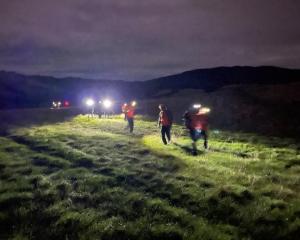March rainfall and temperature records — some more than 150 years old — have been toppled left, right and centre in the South Island.
Niwa meteorologist Tristan Meyers said March was "bone-dry" for much of the South Island because frontal systems from the Southern Ocean were infrequent and generally lacked the subtropical or tropical connection needed to generate significant rainfall.
"While easterly airflows occasionally brought showers to eastern areas, as these winds traversed the Southern Alps and descended over the western slopes, they dried and led to unusually sunny conditions for the West Coast.
"Hokitika, Reefton, Greymouth and Milford Sound were among those areas that had their lowest March rainfall on record.
"Inland Canterbury, Southland and Otago also suffered from a lack of rainfall."
He said Lake Tekapo recorded just 1mm of rain for the whole month, Queenstown recorded 4mm (its lowest in 151 years), and Balclutha just 6mm — all of which equated to less than 10% of the normal March rainfall.

"Further emphasising this dryness, 20 locations had 29 or more dry days (daily rainfall totals less than 1mm) during March in the South Island, including Hokitika, Lake Tekapo, Wanaka, Queenstown, Manapouri and Balclutha."
Dunedin (Musselburgh) recorded its second-lowest since 1918.
Mr Meyers said abnormally high pressure contributed to "summer-like warmth" which continued into March for much of New Zealand.
"Above average sunshine, due to a lack of low pressure systems, added to warmer than average conditions.
"Further driving the warmth were sea surface temperature (SST) anomalies observed off the west of the South Island which were the largest of any of New Zealand’s major six climate regions on record.
"Warming temperatures — air and sea — and more frequent and intense heatwave events are a feature of New Zealand’s changing climate."
He said 35 locations observed record or near-record mean air temperatures during March.
Seven Otago and Southland locations had their highest March mean air temperatures on record.
Queenstown recorded its warmest March mean air temperature since records began more than 150 years ago.
The highest March temperature in New Zealand was 30.6degC, observed in Whatawhata on March 9 and 15.
The lowest temperature was -0.9degC, observed at
Manapouri Airport on March 25.
The nationwide average temperature in March 2022 was 16.9degC, making it New Zealand’s eighth-equal warmest March on record.
"As has become a recurring theme, there were no low
temperature records," he said.












